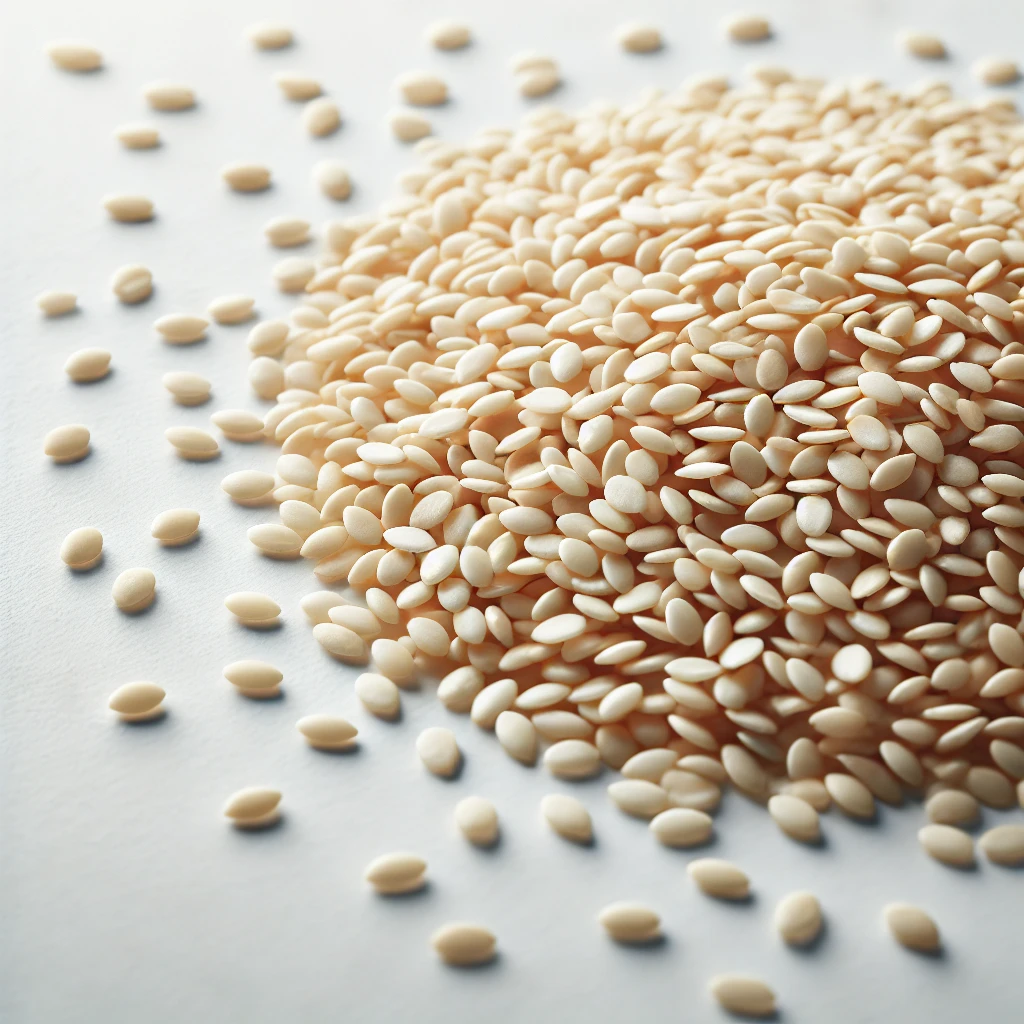Botanical Name: Sesamum indicum
White sesame seeds are a popular and ancient ingredient used in cuisines worldwide, valued for their mild, nutty flavor, versatility, and rich nutritional profile. These tiny, ivory-colored seeds come from the flowering sesame plant, one of the oldest cultivated plants known to humankind. White sesame seeds, often found in both their hulled and unhulled forms, are prized for their ability to enhance both savory and sweet dishes.
Culinarily, white sesame seeds have a slightly sweet, nutty taste that intensifies when toasted, making them a beloved addition in everything from baked goods to stir-fries. In Asian, Middle Eastern, and Mediterranean cooking, white sesame seeds are frequently used to garnish breads, sushi, and salads. Their light color and crunchy texture make them an appealing topping for a variety of dishes, adding a visual and textural contrast that elevates simple foods like breadsticks, bagels, and even cookies.
A well-known use of white sesame is in the production of tahini, a smooth, rich paste made from ground sesame seeds that is a staple in Middle Eastern cuisine. Tahini serves as the base for many iconic dishes, including hummus and baba ghanoush, and its creamy consistency and slightly bitter, nutty flavor make it an ideal sauce or dressing for meats, vegetables, and grains. In Asian cuisine, white sesame seeds are often ground into pastes or sauces to be used in stir-fries, marinades, and dressings, contributing both flavor and a boost of nutrients.
White sesame seeds are also used in sweet dishes. In East Asia, sesame seeds are incorporated into desserts like sesame balls (a crispy, chewy snack) or sprinkled onto confections for added flavor and texture. In Western baking, they can be found topping bread or crackers, giving a delightful crunch and a touch of nutty flavor.

